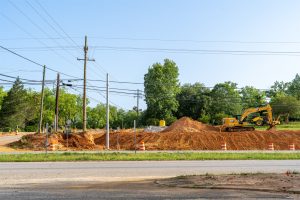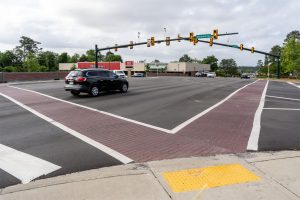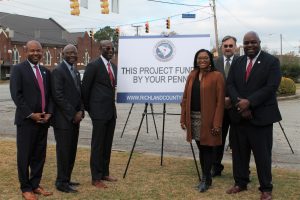Enhancing Transportation Accessibility

Transportation improvements are crucial for a thriving community, and in Richland County, significant strides are being made to ensure every resident can travel safely and comfortably. Thanks to your Transportation Penny funding, a range of projects are being designed and implemented to enhance accessibility for individuals with mobility, cognitive and sensory impairments. These enhancements not only improve connectivity but also foster greater independence and inclusion within our community.
Key Features of Accessible Transportation Design
1. Sidewalks
Sidewalks are fundamental to creating a connected and accessible environment. For residents who have mobility challenges or prefer not to drive, well-designed sidewalks are essential. They provide a safe pathway for pedestrians, ensuring individuals with disabilities can navigate their neighborhoods and access public spaces with ease.
2. Curb Ramps
Curb ramps are a critical feature for those using wheelchairs, scooters, walkers or other mobility aids. Without proper curb ramps, crossing streets can be both difficult and hazardous. In compliance with Title II of the Americans with Disabilities Act (ADA), all pedestrian crossings must include curb ramps that meet specific standards for width, slope and placement. These ramps facilitate smooth transitions from sidewalks to streets, ensuring safe and convenient access to public transportation and other essential services.
3. Detectable Warning Pavers
Detectable warning pavers are specially designed tiles placed at crosswalks to assist individuals who are blind or visually impaired. These tiles typically have a contrasting color, such as bright yellow, to signal the beginning or end of a crosswalk. The tactile surface of the pavers helps alert individuals to potential hazards and aids in navigating crosswalks more safely.
4. Crosswalk Enhancements
To improve safety at intersections, crosswalk enhancements are crucial. These include well-defined curbs and ramps, smooth and hazard-free paving, and clearly marked crosswalk paths with high-contrast markings. Such features make it easier for all pedestrians, including those with disabilities, to navigate intersections safely and confidently.
5. Bus Shelters
Adding more bus shelters throughout Richland County contributes to a more accessible transit experience. ADA-compliant bus shelters are designed with level floors or ground space, benches with back support, and easy access to boarding and alighting areas. These design elements ensure that waiting for and boarding the bus is a comfortable experience for all passengers, including those with disabilities.
6. DART – Dial-a-Ride Transit Service
For residents who cannot access standard bus services because of ADA-certified disabilities, the DART service provides a vital alternative. Part of The COMET transit system, DART offers door-to-door transportation, with buses equipped with wheelchair lifts. These buses can accommodate up to four wheelchairs, ensuring individuals with mobility challenges can travel conveniently and safely.
The Importance of Accessible Design
Incorporating ADA enhancements into transportation projects ensures compliance with legal requirements while fostering inclusivity. These designs address the needs of individuals with disabilities, promoting equal access and participation in community life. By prioritizing accessibility, Richland County is creating a more equitable environment where all residents can navigate public spaces and transportation systems with ease and independence.
Here are some locations that have utilized ADA enhancements:
SIDEWALKS
Rabbit Run Connector Project
Connecting Lower Richland High to Garners Park Road.
CURB RAMPS
Bull Street and Elmwood Intersection Project
CROSSWALK ENHANCEMENT
North Main Street Widening Project
DETECTABLE WARNING PAVERS
Green Street Improvements Project, Phase 2
BUS SHELTERS
Lucius Road Superstop





